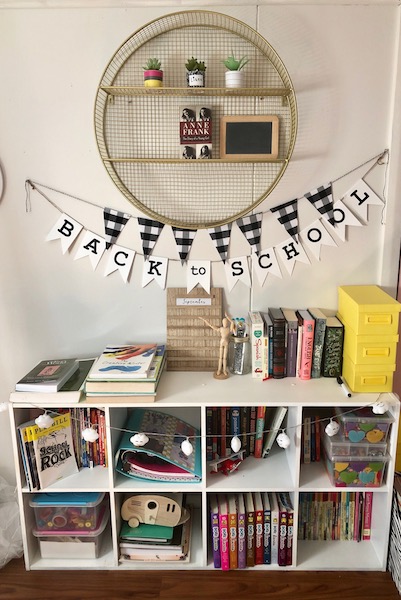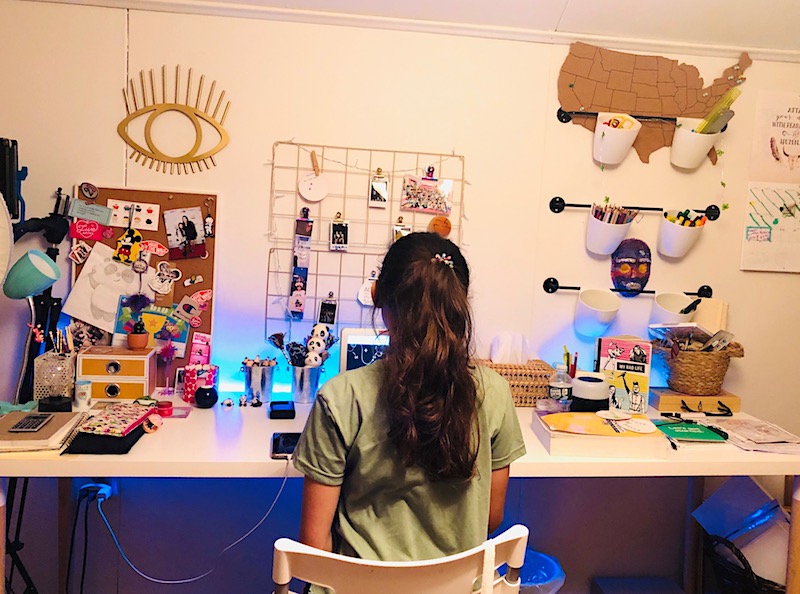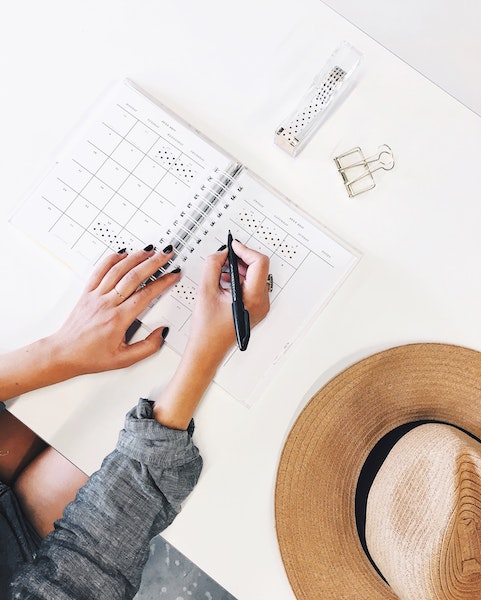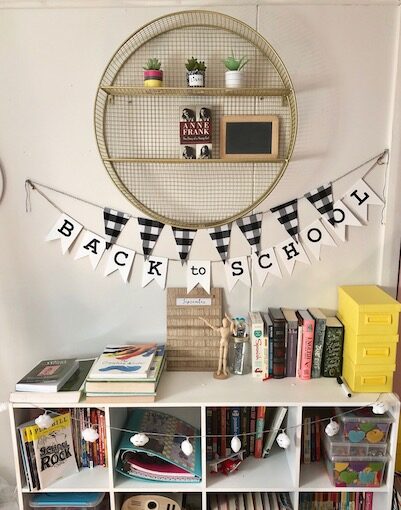Times are uncertain and Covid cases seem to be rising these days. Aside from keeping your family protected, you may be worried about the new school year come Fall. What will happen? Is there a stable plan? Is it safe? The answer is no one really knows. But there are options. And one of those is taking things into your own hands and opting to privately homeschool your children.
If you’ve been following me for some time, you’ll know that I decided to homeschool my daughter this past school year. So I’ve gotten many questions about making the transition from public online school to private homeschool. Here are 10 steps to get started.
More Reading: How to Work from Home AND Homeschool
But First, Questions
Before I get started. Here are the most common questions I have received.
What exactly do I need to do to start homeschool? If you’re child is currently enrolled in a public school, you will want to send a letter to the board of education to withdraw your child. I used a template from the HSLDA which is a good membership to have. Keep a copy of that letter for your records. You also have the right to request your child’s transcripts for your records. *Check your states rules. NJ is very flexible but some states have different requirements and rules.
Is homeschooling hard? I don’t know if I can do it. Do I need to teach them all day? It’s just as easy as signing up for all those school bake sales, morning drop off and dealing with other parents with road rage at pick up. Kidding…or maybe not. Ok, so at first, it was not a walk in the park but after we got the hang of it, we did just fine. Difficult is really what you make it. Our challenge at first was getting the day started and getting into a routine. And that all depends on how organized you are, what curriculum you choose and the type of student your child is. Because I am a planner type of person, the best way for me was to organize, prepare and plan out homeschool. Bu I’ve met other moms who are not and just swing it- and they’re ok!
Is homeschool expensive? Well, that depends on how you look at things. I created my daughter’s curriculum and bought all of her textbooks, reading books, and supplies. Some text books I was able to buy used which saved me $$. And having a teacher ID helped me get teacher discounts at lots of stores. I also bought her a math program which she did online. Some parents opt for a full online experience and pay a fee from $25-200 per month. But here’s what you don’t spend money on when you homeschool: backpacks, lunch bags (unless you take your work elsewhere), lots of clothes (my daughter prefers cozy loungewear or sweats for home unless we go to meetups and trips), gas (to get to a from school), school fundraisers and more.

Do I need a lot of space? I don’t have a classroom! No, you don’t. If your child has a desk in their bedroom or maybe there’s a table in the living room or the dining room table- as long as there is a usable workspace- you’re good!

What does “deschooling” mean? This is probably what parents should have been allowed to do instead of jump into distance learning. It’s basically a time period that you allow your child to adjust- from public school to homeschool. To have a more successful homeschool experience, a child has to let go of the private or public school culture. It’s an adjustment period. And I do recommend it. For example, my daughter went to (both private and public) schools until the 7th grade. I had her finish the school year and in the summer, I had her read a summer reading book of her choice and help me put together her new curriculum. But when all of the kids went back in September, she started the following week and our first couple of days were spent on the beach discussing her summer book and working on a grammar workbook. So I took it slow. I wanted her to get used to a different way of learning and a week later, I gave her a schedule (we both came up with) and the work got more intense. However, we did other things (2-2x a week)- like meet with a group of homeschoolers at the library, visit a museum, work on a project; etc. This is our story though, yours will be different.
Now that we have those questions answered, here are my tips to start homeschool. These are things that worked for us (I wish I had a guide like this) so I am happy to help others and share it 🙂
Here are 10 Steps to Start Homeschool
- Withdraw and Deschool. As I mentioned before, you have to withdraw your child from his/her current school. If your child has not yet entered any school system, you don’t have to worry. This is for children that are already registered in a school system. I do recommend joining the HSLDA. This is where I got the template for our letter of withdraw. It’s about $10 per month and you can access their resources, get discounts and if anything goes wrong, they will help you (legally). If you do join, you will also want to take advantage and get a Teacher ID card with them so that you can get discounts at places like Barnes & Nobles, Michael’s, the Container Store and more.
- Join Homeschool Facebook Groups, Connect. This was so helpful for me. I searched homeschool moms in NJ, in my local county, and town. Through these groups, I was able to get more information, advice, tips, info for upcoming events or trips and my daughter made new friends. Homeschooling your child doesn’t mean you disconnect from other kids, keeping them social is important. I also found that unlike at public school, children will feel more comfortable and social with others when they are homeschooled. Don’t listen to those myths of kids being awkward, it’s the total opposite.
- Choose a Curriculum. This was the trickiest part for me at first. But after so much research and getting advice from other parents, I decided to build my own. Being a writer, Language Arts planning was fun (and intense according to my daughter). And when I checked against another curriculum later in the year- I was on point! I used Google Classroom to keep up on track with assignments and record keeping. I created my daughter’s curriculum using textbooks, some online resources, projects and open discussion. I was very hands on when it came to Language Arts, History and Spanish but we purchased a Math program (Nicole the Math Lady) and Science she used a textbook/ workbook kit we purchased at a used homeschool book sale. I also threw in Health and Physical Education using a combo of Kahn Academy (great resource for health and more!) and for gym she did Yoga daily for 15 minutes and made a smoothie bowl after (still educational). She had private music lessons 1x per week and practiced daily as well. Art was free choice but I would assign 1 artist to learn about per week with a short assignment inspired by the artist. Or I’d assign an art history lesson weekly (Kahn Academy). It was a mix. Basically, you can create a schedule and customize it as much as you like. Every child is different and I believe that when you involve them in the planning and focus on things they love, they will do better. BUT this was our way. You can shop around and completely buy a curriculum or sign them up for private or public online. It’s all up to you. I also want to mention that my daughter was a very good independent worker. I work from home and she would pop into my office throughout the day to ask questions or discuss something but it wasn’t so much that I could not focus on my own work. (Resources we love- Scholastic, Khan Academy, PBS Learning Media, Teachers Pay Teachers, SparksNotes, Smithsonian, DuoLingo)
- Be Sure to Include Electives. I mentioned electives like Art and Music- these are important. Sadly, schools cut out these things but they’re an outlet for creativity, a way to destress and feel something. I highly recommend including electives in your child’s schedule. If your child loves LEGOs, there are free online STEM resources out there. Or maybe they love nature, plant a garden with them. Cooking, sewing, woodshop- there are so many things you can consider an elective!
- Set Up Your School. I can’t stress enough the importance of a space -any kind of space for your child to be able to sit down and do schoolwork. Think about yourself- can you focus in a cluttered area? A dark space? On your bed? Probably not. I know I don’t work my best that way. Before we began homeschool, I set up cubbies for my daughter’s school books and supplies. She has a craft studio upstairs in our home so it was perfect to set up an area of that for school. I also found a long IKEA desk (on Facebook Marketplace) which was super helpful. She had room to work, study and craft. She spent most of her school days in that room and even in the summer, she loves being up there crafting.
- Get a Planner. I try, I really do. But I’m human, I can’t remember it all. So having a planner is a lifesaver. I had one for me personally and a smaller one for homeschool.
- Get a File Box. Having a filebox will help keep you organized. Most of our stuff was online but there were still assignments and projects she turned in. I keep everything in her homeschool file box. You never know if you will ever need it and it’s nice to have.
- Create a Schedule. I love Google Classroom and I love that you can make a schedule on it, too. To keep ups on track, I created a schedule. For example, Gym, Language Arts, History, Lunch, Math, Science… Science we broke into two times a week. Yes, you can do that. Spanish and Art as well. The times didn’t have to be exact but it was more like – you need to cover these today. I find it helpful when things are scheduled but it’s up to you, of course. *Sidenote: You can choose to do school at whatever times work for you. I work from home so I usually get up a little before my daughter to get my own day started. We usually start around 10/10:30 and end around 2:30/3 but if she’s not done with work she can extend or continue later or the next day. I have met other moms who work fulltime and their kids don’t do school until the evening. Or moms that teach longer days on the weekends. It’s all up to you. I give her early Fridays where she can finish at noon and spend the rest of the day on artwork.
- Attend Meetups, Plan Trips. Because of the pandemic, this may not be easy at the moment. However, there are a lot of virtual options out there. And you can still plan little trips to a farm, park- anything outdoors. I know a lot of moms work so depending on your schedule, see what works for you.
- Keep Track of Everything- Including Receipts. I keep a folder with all of my receipts and information. You don’t have to do this. I just do it for my own records. In that folder, I also keep a copy of the withdraw letter, receipts from all of the books I have purchased and more.

More Opportunities
This school year, we’ve decided on Silicone Valley High school online, a few electives and a business. Yep, I forgot to mention she was able to take an entrepreneur program and launch a business online. Those are perks about being homeschooled- you can integrate more things into your schedule. I am not saying one is better than the other but for us, we found that there was more room and flexibility to explore other things like these kinds of programs (and travel when it’s ok again). My daughter also took a virtual fashion design class and FIT classes. And we plan to enroll her in a pre-college program so that she can get college credits while in High School.
Happy Homeschooling!
You can totally do this! I freelance, run multiple sites, and homeschool. It works for us. I hope you find my personal examples and advice helpful. And if you have any questions, please don’t hesitate to DM me on social or shoot me an email. I am happy to help 🙂








